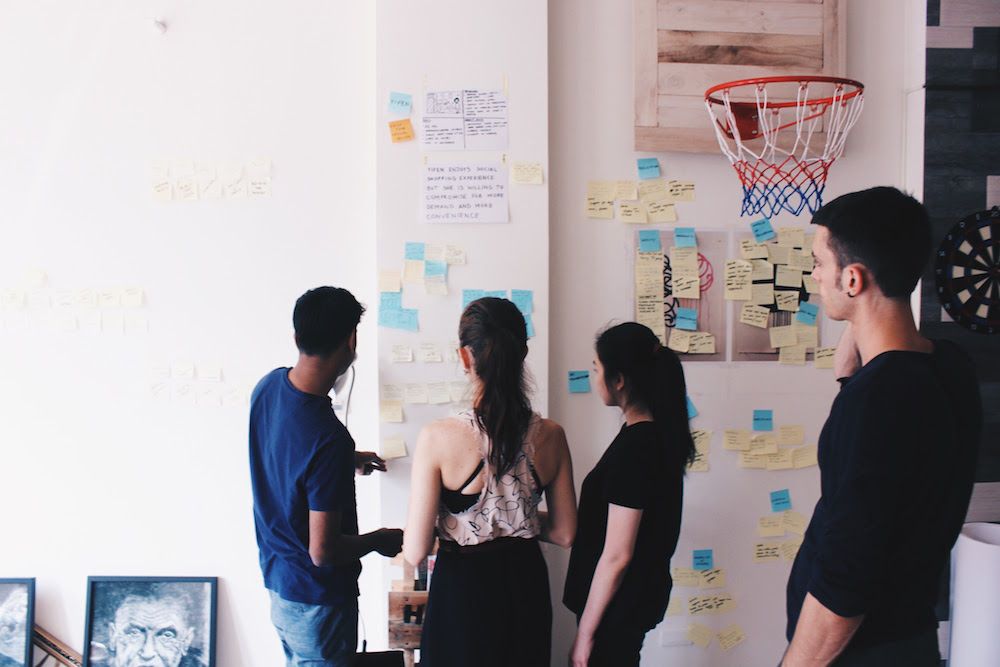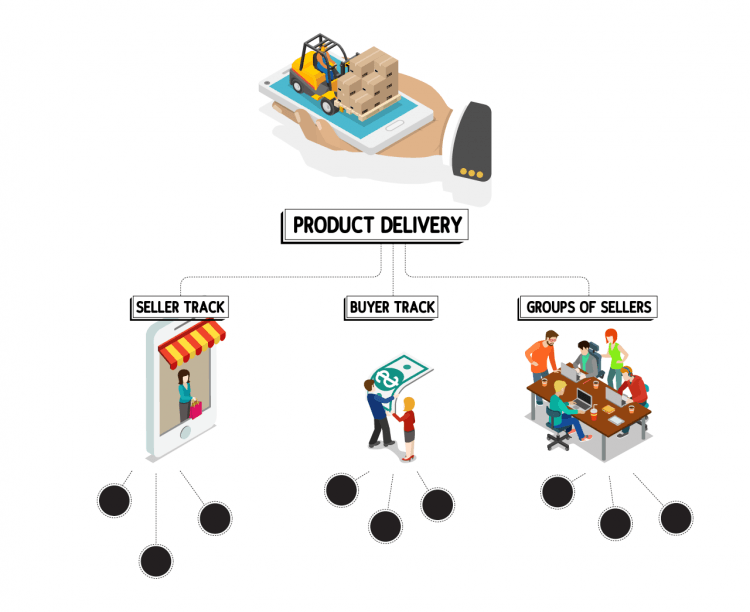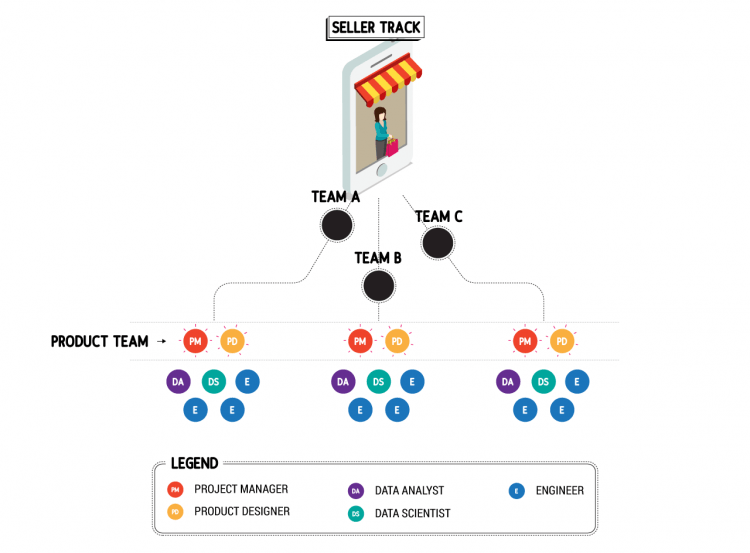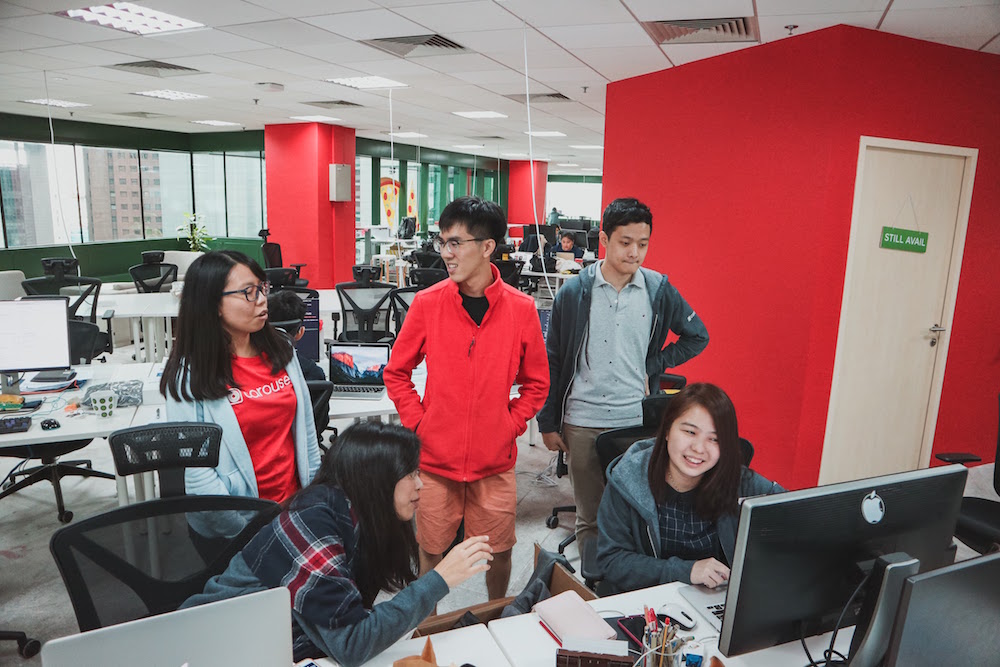The Inside series is a column where the Tech in Asia Jobs team gives an insider’s glimpse into interesting companies and professions. Search jobs from companies like Carousell, Skyscanner, Lazada and Go-Jek here today!

Members of the product team at Carousell. Photo credit: Carousell.
You launch a mobile app on camera mode, and pan it across your room. The app suggests items you could get rid of, and the exact price you can sell them.
You see an iPhone you no longer use. You snap a photo of it with the app, which identifies it as an old iPhone 6. It suggests you list it under the “mobile phones and tablets” category, and that you can sell it for $700. A couple of taps later, your phone is up on the online marketplace.
Carousell is working to make this vision a reality. I sat down with Andrius Baranauskas, VP of product at Carousell, to find out how.
Carousell
Carousell is a mobile classifieds marketplace with a vision of inspiring everyone in the world to start selling. Launched in Singapore in 2012, the company now has over 180 employees, including 70 in the product and engineering team.
The product team at Carousell

Members from the Carousell product, engineering and senior leadership teams. Baranauskas is seated at the back, second from the left. Photo credit: Carousell.
“Our team is responsible for the user experience that starts when you hear about Carousell from someone, and ends when you tell someone about Carousell,” says Baranauskas.
The team wants to create an experience that caters to the needs of the layperson. “We are the platform for everyday people,” he says. “Few of them are professional sellers. They don’t know how to sell. But almost all of them have bought things they don’t need.”
This is where they start – by solving user problems like ‘I don’t know what to sell’, ‘I don’t know how to price things’, or ‘I want to sell as quickly as possible’.
Product team structure and dynamics
The product team
Led by Baranauskas, the product team consists of 14 product managers and product designers in Singapore. The team is split into various product delivery teams.
Product delivery teams
Product delivery teams are structured based on different parts of the user journey, as well as groups of users.
For the teams structured based on different parts of the user journey, they make up two different tracks – the seller track and the buyer track. Within the seller track, a team would focus on a specific part of the seller journey, for example, the New Seller Success team. This team is solely focused on helping new users become successful sellers, and they form a product delivery team.

Product delivery teams branch out from the respective tracks, indicated by the black circles. Image credit: Joshua Lim.
At the same time, teams are also formed around new categories Carousell enters into, the latest being cars and real estate. Sellers in these categories often have product needs that are different from those selling in other categories. For example, there is a dedicated team working on tools for people who sell cars on the platform. They form another product delivery team.
Product delivery teams have between five to 15 people, depending on the complexity of the problem they’re trying to solve and how much they want to invest in the area.
“Inside every product delivery team, we have a product manager, product designers, data analysts, data scientists, and engineers working together,” says Baranauskas. “In a way, they are a mini-startup. They’re able to move quickly on their own, and are able to ship stuff with little help from other teams.”

Product managers and product designers form part of each product delivery team. Product managers and product designers across all product delivery teams form the product team. Image credit: Joshua Lim.
There are clear responsibilities for each person within the team, and they each have a set of questions they should answer.
- Product manager — “What do we build?”
- Engineers — “How do we build that? And when are we going to ship it?”
- Product designers — “How do we design this? And how should we implement this from the user experience perspective?”
“None of these questions can be answered independently, and none of these people make those decisions on their own,” he says.
At the same time, these teams interact a lot with other relevant teams within the company.
“For example, the New Seller Success team needs to think about the previous part of the user journey, and thus interacts a lot with the marketing team,” says Baranauskas. “They need to know the marketing message users get when they learned about Carousell for the first time, and be able to deliver on the promises made there. This ensures a smooth transition from one part of the user journey to another.”
Back in the product team, sync and review sessions are held each week to go through things that the different product managers are working on. “This is where everyone can give input on each other’s work and help improve on that,” says Baranauskas.
Alignment of goals

Carousellers at the main working space. Photo credit: Carousell.
With so much going on at Carousell at any one time, it’s a challenge to steer teams in the same direction.
“Alignment usually happens at the level of the company’s objectives and key results (OKRs) that basically state the direction the company is going,” says Baranauskas. “This is decided upon by the executive team.”
“At the team level, there is a long-term focus aligned with the company’s OKRs,” he says. “For example, the long term focus of the New Seller Success team is, of course, new seller success, but their quarterly goals might be narrower than that. Maybe they’re focusing on a specific part of the funnel that new sellers go through for that quarter. The team is free to decide what to build and ship to achieve the necessary results, as long as they stick to the goals they set out to achieve.”
Process of building products

Image credit: Joshua Lim.
What’s in the pipeline?
“One area we’re investing a lot in is artificial intelligence,” he says. “We’re very lucky for the growth we’ve achieved so far, and this growth gives us a lot of data. We have 80 million listings on Carousell, and tens of millions of transactions that happen on our platform. That’s a tremendous amount of data. And we can leverage that data to build AI to improve user experience significantly.”
This goes back to the vision he had for Carousell at the start of the article.
“For example, one big problem for new sellers on Carousell is that they often don’t know how to price things,” says Baranauskas. “Our data shows that new sellers overprice things by 20 percent. What if we can recommend a price for your item based on successful transactions in the past? With AI, we can do that, and help new sellers price their products more competitively.”
“There’s an opportunity here to create a big impact, and we have both the people and technology to do that. We’re already shipping things step-by-step that will get us there,” he says.
Areas for improvement
Baranauskas says he would like to dedicate more time and resources on user research. “With our team growing fast, and the number of areas we are tackling growing even faster, it is very easy to focus on what is urgent — shipping out features,” he says.
They however recognise that in order to ship the right changes and features for the product, it is important to understand the user. “We are beginning to integrate regular research efforts in our team’s work flow, and actively looking for the first dedicated user research hire,” he says.
Hiring

The Carousell team, July 2017. Photo credit: Carousell.
“We are looking for unicorns,” Baranauskas laughed. “We look for people with a combination of empathy for the user, ability and attention to process the data, and at the same time have a voice and understanding of the potential solution. It’s pretty hard to get someone with a combination of all that.”
“For example, you don’t see product people naturally going out and talking to users. We are a lot happier sitting in the office designing solutions that no one needs. We need people who are happy to just go out and talk to users, but at the same time can use this understanding to come up with ideas and potential solutions,” he says.
So what advice would he give to someone interested in working in a product team?
“Start by asking if that’s something you really want,” says Baranauskas. “Is looking into user data and industry trends things that truly excite you? Are you excited about shipping things? Can you own all of this? If yes, then you’re a good fit.”
This post How Carousell runs its product team appeared first on Tech in Asia.
from Tech in Asia https://www.techinasia.com/carousell-runs-product-team
via IFTTT
No comments:
Post a Comment